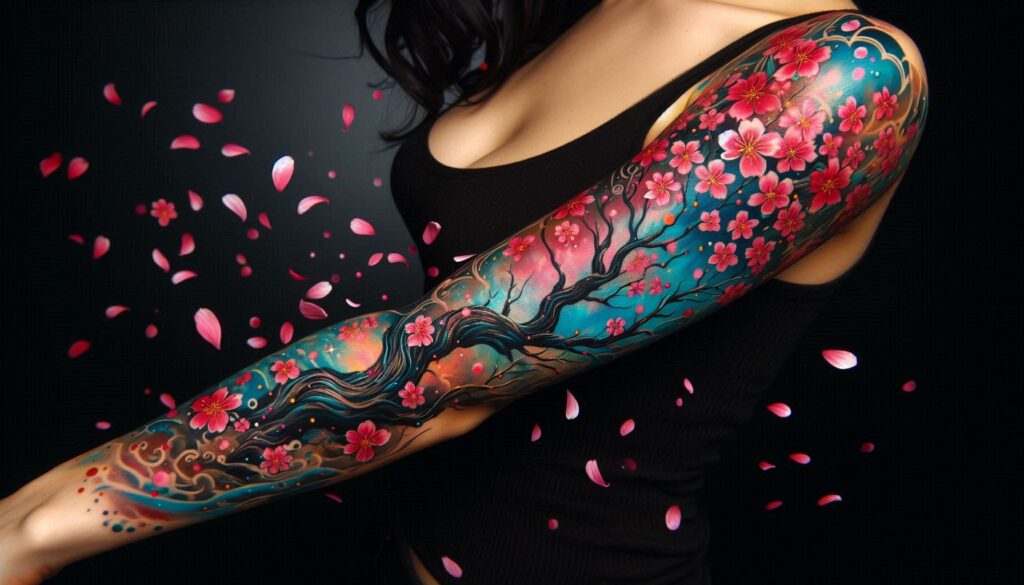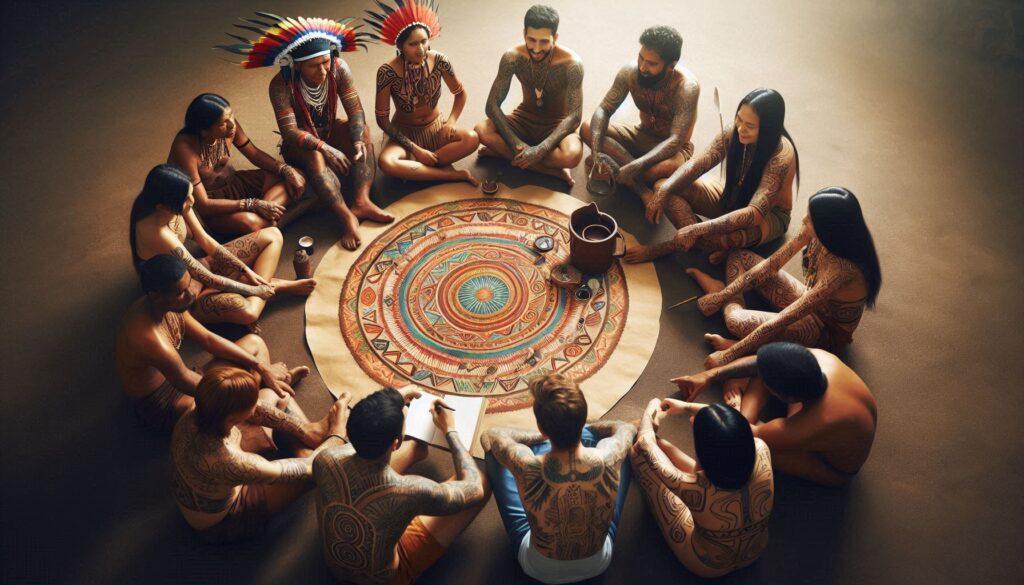The History of Tattooing Among Australian Indigenous Tribes
Tattoos have long served as a profound form of expression, identity, and culture across various societies, and the indigenous tribes of Australia are no exception. The practice of tattooing among these tribes is steeped in rich history and meaning,

reflecting their unique connection to the land, their spiritual beliefs, and social structures. As we delve into the history of tattooing among Australian Indigenous tribes, we uncover a fascinating narrative that intertwines art, culture, and identity.
Ancient Beginnings: The Roots of Indigenous Tattooing
Tattooing among Australian Indigenous peoples can be traced back thousands of years, with evidence suggesting that these practices were deeply integrated into the social fabric of many tribes. Early records and archaeological findings reveal that tattooing was not merely decorative; it held significant cultural importance. Tattoos often represented an individual’s tribal affiliation, social status, or personal achievements.
Traditionally, the methods of tattooing varied widely among different tribes. Some utilized tools made from sharpened stones or shells, while others crafted needles from plant materials or animal bones. The pigments used for the tattoos were often derived from natural sources—clay, charcoal, and ochre provided vibrant colors that could withstand the test of time. The entire process was ceremonial, often involving rituals and community participation, which reinforced the social bonds within the tribes.
Symbolism and Meaning: More Than Just Ink
For Indigenous Australians, tattoos are imbued with deep symbolism. Each design and mark tells a story, often relating to personal experiences, ancestry, or spiritual beliefs. For example, some tattoos signify important life transitions, such as initiation into adulthood, while others commemorate significant events, like a successful hunt or a tribal victory.
Moreover, certain motifs reflect the connection to the land and the natural world. The intricate patterns often mimic elements of nature, such as animals, plants, and geographical features. This connection to the environment underscores the Indigenous belief in the interdependence of all living things and serves as a reminder of their responsibilities as caretakers of the land.
The Role of Women in Tattooing Traditions
While tattooing in many cultures has historically been male-dominated, Australian Indigenous tribes present a different narrative. Women played a crucial role in the tattooing traditions of their communities. In some tribes, women were responsible for creating tattoos for both men and women. This practice fostered a sense of empowerment and autonomy, allowing women to express their identities and cultural heritage through body art.
Furthermore, women often participated in the preparation of pigments and tools, ensuring that the tattooing process was a collaborative and communal affair. These practices helped strengthen the social ties among women in the tribe, as they shared stories, techniques, and the significance of the designs they created.
Modern Resurgence: Reviving Traditional Practices
In recent years, there has been a resurgence of interest in traditional tattooing practices among Australian Indigenous peoples. As younger generations seek to reconnect with their cultural roots, tattooing has become a powerful means of reclaiming identity and heritage. This revival is not just about the act of tattooing itself but also about understanding the historical and cultural contexts that inform these practices.
Contemporary Indigenous tattoo artists are drawing inspiration from traditional designs while incorporating modern techniques and styles. This fusion of old and new has resulted in a vibrant tattoo culture that celebrates Indigenous identity while appealing to a broader audience. Many Indigenous artists are using their platforms to educate others about the significance of their work, aiming to dispel misconceptions and promote a deeper appreciation for the cultural heritage behind the tattoos.
Cultural Appropriation: Navigating the Modern Landscape
As the popularity of tattoos has grown in mainstream culture, concerns about cultural appropriation have surfaced. Many non-Indigenous individuals may be drawn to Indigenous designs without understanding their significance, leading to the commodification of sacred symbols. This phenomenon raises ethical questions about ownership, respect, and representation.

For Indigenous artists, it’s essential to maintain the integrity of their cultural expressions. They advocate for awareness and respect regarding the meaning behind their designs, emphasizing that tattoos are not merely aesthetic choices but are rooted in deep cultural traditions. Engaging in open dialogue about cultural appropriation can foster understanding and appreciation, allowing for a more respectful exchange between cultures.
The Influence of Indigenous Tattooing on Australian Culture
Tattooing among Australian Indigenous tribes has not only shaped their cultural identity but has also significantly influenced broader Australian society. As awareness of Indigenous cultures grows, so does the appreciation for their art forms, including tattooing. This influence can be seen in various aspects of Australian culture—from art exhibitions showcasing Indigenous tattoo art to mainstream tattoo studios incorporating traditional designs into their offerings.
Additionally, the integration of Indigenous tattooing into popular culture serves as a bridge for non-Indigenous Australians to learn about and engage with Indigenous histories and traditions. The tattoos act as conversation starters, inviting curiosity and fostering respect for the stories they tell. This dialogue is crucial for promoting understanding and healing between Indigenous and non-Indigenous communities, paving the way for a more inclusive society.
Tattooing as a Form of Healing and Empowerment
In many Indigenous cultures, tattooing has been recognized for its healing properties. The process itself can be cathartic, allowing individuals to confront personal trauma or loss while celebrating resilience and survival. Tattoos can serve as reminders of strength and identity, helping individuals navigate their journeys in a world that often marginalizes their stories.
Some Indigenous tattoo artists have begun to offer tattooing as a form of therapy, creating safe spaces for individuals to share their experiences while undergoing the tattooing process. This holistic approach not only empowers clients but also reinforces the importance of storytelling and connection within Indigenous cultures. The act of tattooing becomes a shared experience, fostering a sense of community and belonging.
Celebrating Diversity: The Future of Indigenous Tattooing
As we look to the future, the landscape of Indigenous tattooing in Australia is vibrant and diverse. Artists are experimenting with new styles, techniques, and mediums while remaining grounded in the cultural significance of their work. This evolution allows for the expression of contemporary Indigenous identities while honoring ancestral traditions.

Moreover, initiatives aimed at preserving and revitalizing traditional tattooing practices are gaining momentum. Workshops, cultural festivals, and collaborative projects are being organized to educate both Indigenous and non-Indigenous communities about the importance of tattooing in Australian culture. By engaging in these conversations and celebrating the diversity of tattooing practices, we can work towards a more inclusive understanding of the rich tapestry that is Australian Indigenous culture.
Conclusion: A Tapestry of Stories
The history of tattooing among Australian Indigenous tribes is a tapestry woven from threads of identity, culture, and connection to the land. These tattoos tell stories of resilience, belonging, and the enduring spirit of Indigenous peoples. As we navigate the complexities of modern society, it is vital to respect and honor the traditions that have shaped Indigenous tattooing.
As this art form continues to evolve, there is an opportunity for both Indigenous and non-Indigenous individuals to engage in meaningful dialogue about the significance of tattoos. By fostering an environment of respect, understanding, and appreciation, we can celebrate the beauty of Indigenous tattooing as an integral part of Australia’s cultural landscape.
For those interested in exploring the world of tattooing further, particularly with a focus on the rich traditions of Indigenous cultures, visit Tattoos Down Under. This platform provides insights, resources, and connections to artists who are dedicated to honoring and reviving the art of tattooing in a respectful and meaningful way. Embrace the stories that tattoos carry and discover the profound connection between art and identity.


Leave a Reply